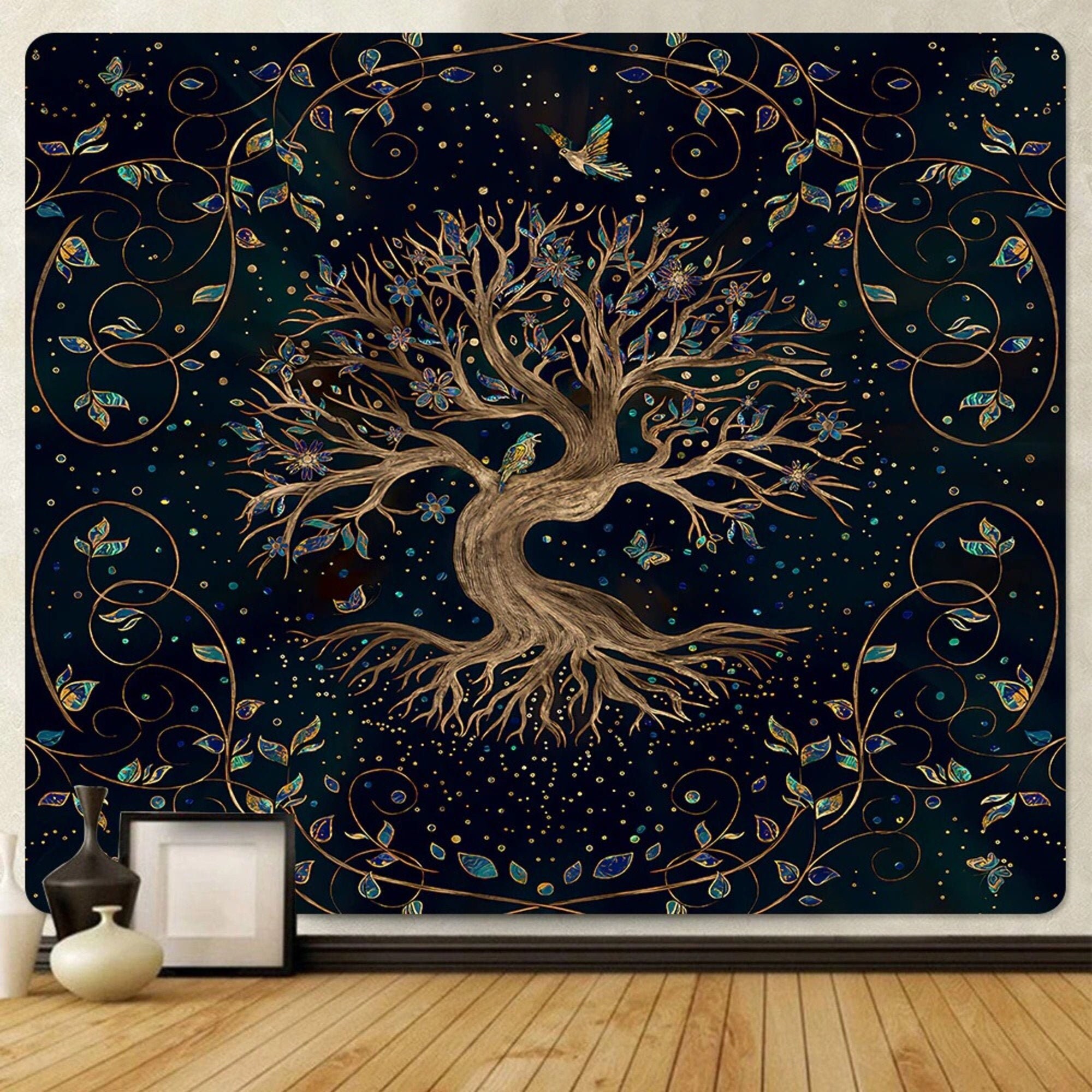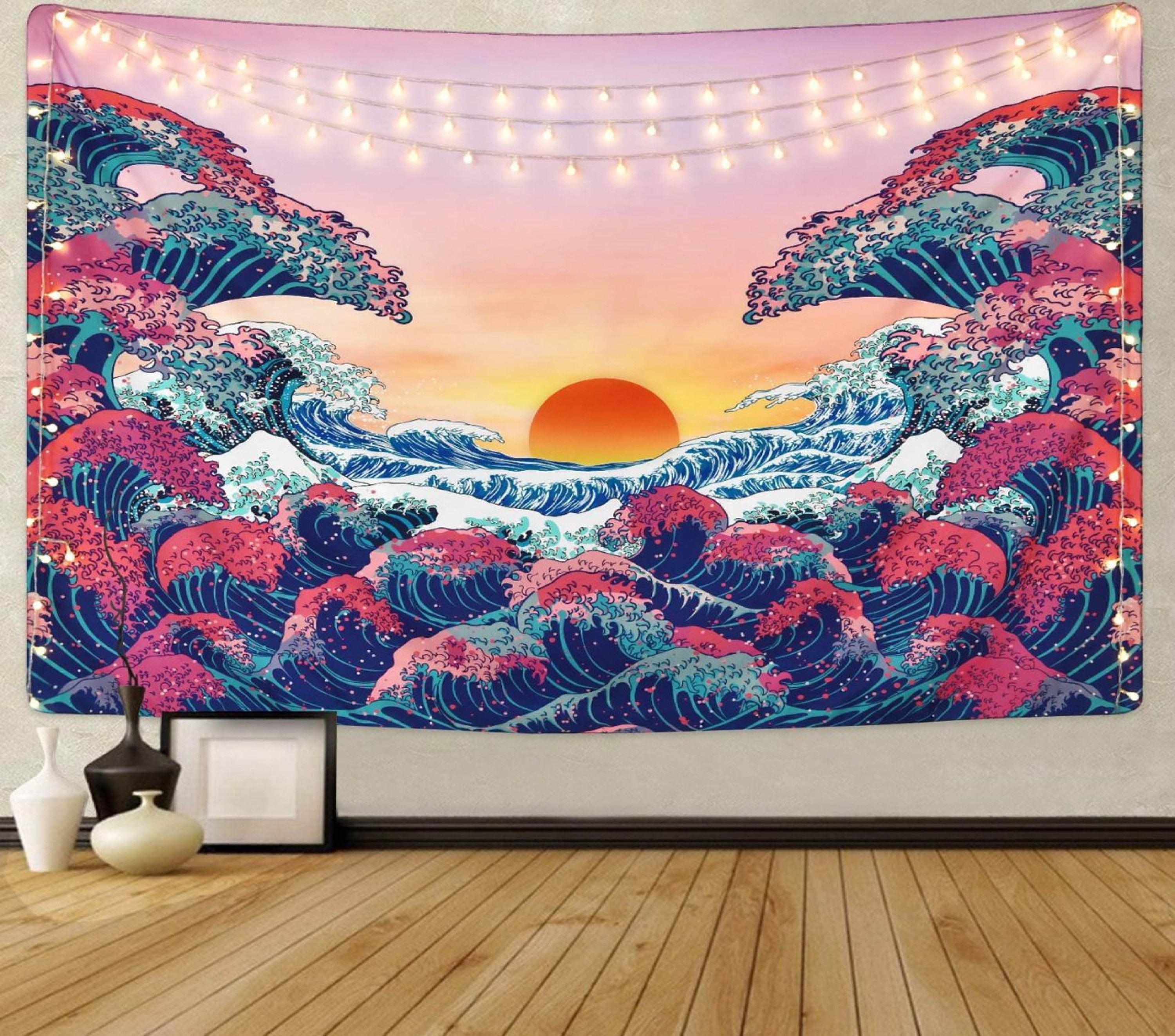Tapestry Wall Art History and Styles

Tapestry wall art, a captivating form of textile art, has a rich history that spans centuries and cultures. Its origins can be traced back to ancient civilizations, where tapestries were used for both decorative and functional purposes.
Tapestry wall art, with its intricate designs and rich textures, brings a touch of warmth and artistry to any space. If you’re looking to add a more organic and natural element to your décor, consider exploring the world of wicker wall decor.
Wicker, with its woven rattan or bamboo, offers a unique blend of texture and durability. And just like tapestry wall art, wicker pieces come in a wide range of styles, from intricate geometric patterns to more free-form organic shapes, allowing you to find the perfect match for your space and personal taste.
Over time, tapestry weaving techniques evolved, and distinct styles emerged in different regions. Flemish tapestries, renowned for their intricate designs and vibrant colors, became highly sought after in the 15th and 16th centuries. French tapestries, characterized by their elegant and sophisticated motifs, also gained prominence during this period.
Tapestry wall art brings a touch of warmth and texture to any room, adding a unique and personal touch. Whether you prefer the intricate patterns of traditional tapestries or the modern simplicity of abstract designs, there’s a tapestry to complement any decor.
For a bright and cheerful kitchen, consider a tapestry featuring sunflowers, a popular motif for kitchen decor. Sunflowers symbolize happiness and positivity, making them a perfect addition to a space where meals are shared and memories are made. From vibrant woven tapestries to delicate printed designs, there’s a tapestry wall art to suit every style and taste.
Gobelin Tapestries
Among the most famous tapestry styles is the Gobelin, named after the renowned Gobelins Manufactory in Paris. Gobelin tapestries are known for their exceptional quality, with intricate designs and rich, harmonious colors. They often depict historical scenes, mythological figures, and pastoral landscapes.
Symbolism and Motifs, Tapestry wall art
Tapestries often carry symbolic meanings and incorporate various motifs. Animals, plants, and mythical creatures frequently appear, representing virtues, vices, and spiritual concepts. For instance, the unicorn symbolizes purity and chastity, while the lion represents strength and courage.
Tapestry Wall Art in Modern Interiors

Tapestry wall art has made a remarkable comeback in modern interiors, adding a touch of history, artistry, and texture to contemporary homes. These intricate woven masterpieces seamlessly blend with diverse design aesthetics, from traditional to eclectic, creating visually captivating spaces.
Choosing the Right Tapestry
Selecting the perfect tapestry for your modern interior requires careful consideration. Consider the size of the space, the style of your décor, and the desired focal point. Large tapestries make a bold statement, while smaller ones can add a subtle touch of elegance. Traditional tapestries feature intricate patterns and rich colors, while contemporary designs offer abstract motifs and vibrant hues.
Placement and Styling
The placement of your tapestry can greatly impact its visual appeal. Hang it as a focal point above a sofa, fireplace, or bed. Alternatively, use it to create a cozy nook or accentuate a specific architectural feature. Experiment with different heights and angles to achieve the desired effect. Mix and match tapestries of varying sizes and styles to create a dynamic and eclectic display.
Tapestry Wall Art as a Form of Artistic Expression

Tapestry weaving, an ancient craft, involves interlacing threads to create intricate and vibrant textiles. The techniques employed in tapestry weaving include plain weave, twill weave, and tapestry weave, each resulting in distinct textures and patterns. Artists utilize a wide range of materials, including wool, silk, cotton, and linen, to achieve varying effects in color, texture, and durability.
Tapestries serve as powerful mediums for conveying narratives, emotions, and cultural identities. Through their intricate designs and symbolic imagery, tapestries can depict historical events, religious stories, mythological tales, and personal experiences. They have been used for centuries to adorn palaces, churches, and homes, reflecting the artistic sensibilities and cultural values of different eras.
Contemporary Tapestry Artists
In modern times, tapestry weaving has experienced a resurgence as a contemporary art form. Contemporary artists are pushing the boundaries of tapestry by experimenting with unconventional materials, techniques, and themes. Some notable artists who have made significant contributions to the field of tapestry art include:
- Jagoda Buić: Known for her vibrant and abstract tapestries that explore themes of identity, memory, and the human condition.
- Sheila Hicks: Renowned for her innovative use of fibers and unconventional weaving techniques, creating sculptural and ethereal tapestries.
- El Anatsui: Celebrated for his large-scale tapestries made from recycled aluminum bottle caps, addressing issues of consumerism and globalization.
These contemporary artists, among others, are utilizing tapestry weaving as a medium for self-expression, challenging traditional notions of the craft and expanding its artistic possibilities.